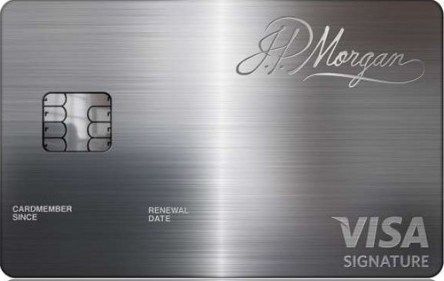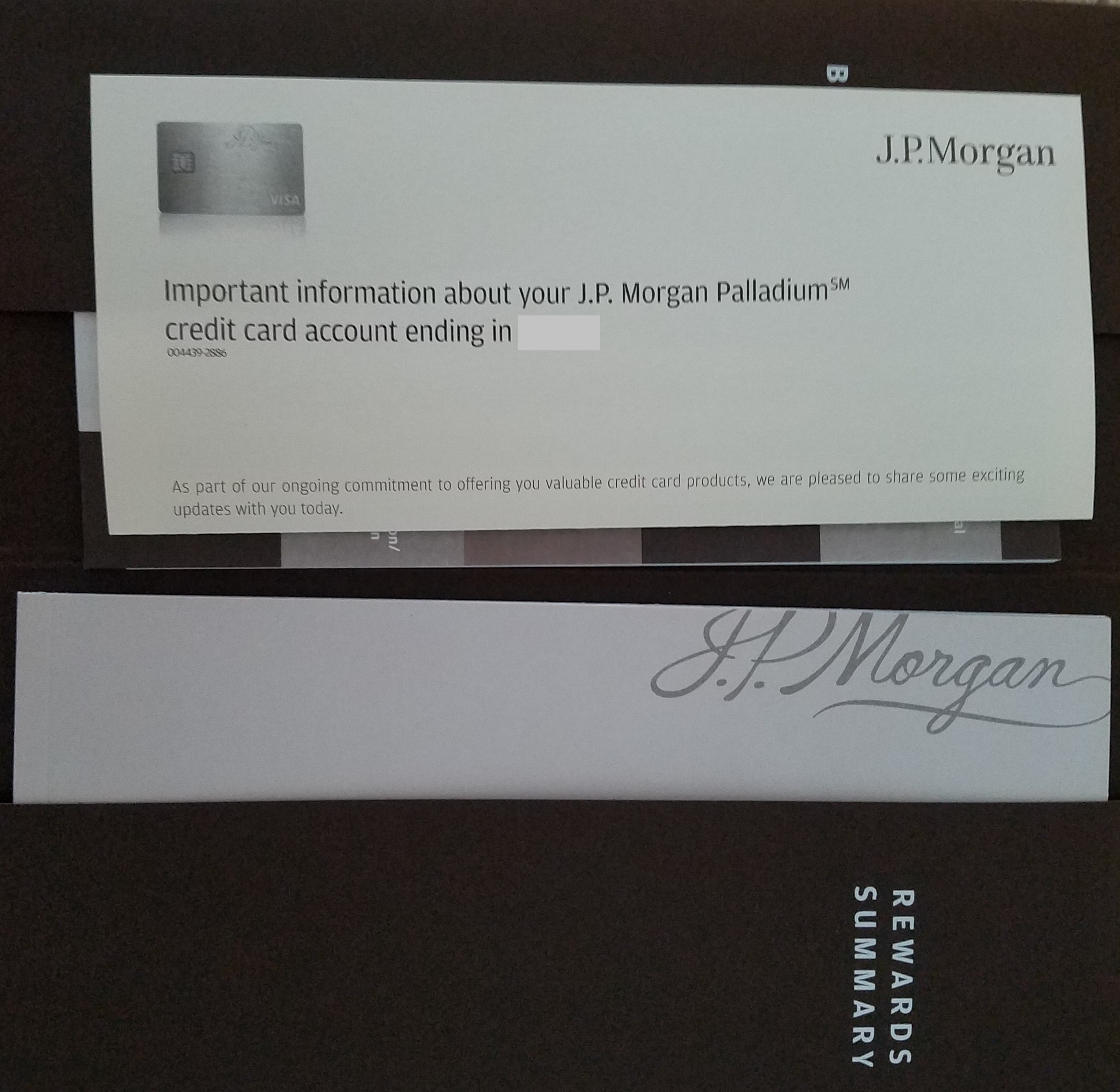Competition in the rewards credit card market has gotten so intense that I believe the Sapphire Reserve card – the ‘it’ product when it was introduced just six years ago – has become passé. It was the most rewarding in the marketplace, and now merely a good card that I think has been surpassed in its rewards-earning.
But what if that card threw in a full United Club membership at no extra cost? And that it has a ‘hidden trade line’ which means it doesn’t report your use of the card to credit bureaus – high monthly balances don’t hurt your credit.
The J.P. Morgan Reserve Card is essentially a heavier metal version of the Chase Sapphire Reserve Card. And it includes United Club membership as an unpublished benefit, a perk which runs $550 – $650 per year depending on a customer’s United elite status. Information about the J.P. Morgan Reserve Card was neither provided nor reviewed by its issuer.
The card is intended for customers of J.P. Morgan Private Bank. J.P. Morgan Private Bank used to be open to individuals with investable assets of $5 million or more, but they now focus on client relationships of $10 million or more (which already represented 90% of their customers).
There are three ways I’m aware of for someone without $10 million in assets with Chase to have gotten this card,
- Anyone who had a Palladium card was transitioned to JP Morgan Reserve. That card used to be available to customers of Chase’s Private Client program which aims to attract customers with a minimum of $150,000 in assets on deposit. However customers who were believed to be capable to moving that much into a Chase account were frequently invited into the program. And there was at one point an application being processed without having a corresponding Private Client account.
- Seven years ago there was an open application for JP Morgan Reserve. It was available around the time Sapphire Reserve launched, and had its own separate offer to earn 100,000 points. That avenue was shut down after a brief window of time.
- Open a Private Banking account with less than $10 million in assets. I’ve been told by Chase Private Bank representatives that despite reports to the contrary they can move Private Client customers with seven figure asset balances over to the Private Bank program, especially if they believe those customers have the potential to bring in additional assets.
Here’s someone on YouTube who was a Chase Private Client customer and opened a Private Banking account without $10 million in assets, and unboxes the J.P. Morgan Reserve. (HT: choff5507)
I believe that many current cardholders are Chase Private Client customers who had the J.P. Morgan Palladium card. We know that President Obama, during his time in office, was a Chase client and likely had the Palladium card.

For a $595 annual fee, Palladium offered:
- United Club membership and Priority Pass Select with complimentary guest
- One year of GHA Hotels Black status
- What was once a highly regarded concierge service
- 35,000 bonus points after $100,000 spend each year.
- Double points on travel
- A hidden trade line meaning it doesn’t report each month to the cardmember’s credit (use of credit line doesn’t increase utilization ratio and reduce credit score)
The Palladium card was discontinued for new customers. Chase Private Client customers are now directed to the Sapphire Reserve card, earns triple points on travel and dining and comes with a $300 travel credit and Priority Pass membership. Of course while heavier than the average card it isn’t nearly as heavy as Palladium.
The Palladium card came with the cardmember name and card numbers engraved into the metal on the front, and the cardmember’s signature engraved on the back. (Customers submitted a signature card to Chase prior to card production.)
Palladium cardmembers kept their current card and it switched benefits to ‘Sapphire Reserve + United Club’ in 2017. When those cards expired they get replaced by a similar-looking J.P. Morgan Reserve card without the engraved signature on the back. The J.P. Morgan Reserve also doesn’t offer GHA Hotels elite status or 35,000 bonus points after $100,000 spend. Newly-issued J.P. Morgan Reserve cards are no longer made of the heavy metal at all, since the old design didn’t work with tap to pay.

Arguably the Amex Black Card may have richer benefits, but in my view is in no way worth the price. That leaves the J.P. Morgan Reserve Card as the best U.S. rewards credit card — as it has an annual fee of just $550, has a $300 annual travel credit, and not only includes all of Sapphire Reserve’s benefits but also comes with United Club.


All we peons and riff raff sigh as we are not worthy
So so sad
I kept “losing” my card. Morons on ebay would buy a cancelled one for $500+
Somehow I think that a person with more than 10M in assets would have little interest in a United Club membership of any kind.
Recently, the CSR card has become lighter than it used to be.
@jsn55-I agree. I’m not aware of any private aircraft terminals that have a United Club.
For some reason I never get a retention offer for this card LOL
For those who don’t like carrying around a heavy card, Chase will send out a plastic version of CSR if you request it
Chase isn’t touching my money for a perk that i don’t care about.
I know a dozen people with over 10M in assets who fly commercial mostly/almost exclusively– 10M ‘aint as much as ya think it is (these folks tend to have a lot of other very expensive hobbies and interests) and private jet flying costs much more than ya think it does.
I wouldn’t entrust Chase with $1M to “manage,” never mind $10M. And there’s nothing worthwhile at a United Club. CSR is great enough.
To the unethical crook who was stealing from JP Morgan by selling his “lost cards” which were worth over $1500 in the precious metal Palladium (before JPM changed the card formula) for just $500 :
Who’s the moron now, douchebag ? 🙂
One more path to the card: my son got invited and dragged my wife and i along to the private bank.
“…and dragged my wife and *me* along to the private bank.” You’re going to want to sound educated when surrounded by the 1%ers.
Chase Private Bank is largely useless. The only Private Bank that would assist you (you still need to understand which of the financial investment vehicles offered you should take) is Goldman Sachs. But they require over $35m in assets.
There’s nothing special about this card other than the free membership in the United Club. I’ve had one for more than a decade and the only reason I keep it is it’s no more expensive than the CSR. Unless you’re a diehard United flyer who really values membership in the United Club you’re not missing anything.
I’m worth $20m, can’t afford to fly private and don’t have any lounge membership, so this could be good for me.
I was with CPB year ago, when palladium was new had not really any better than cheaper cards. The one temptation was that it allowed free cash advances, so would have allowed me to not carry an ATM card.
When the AUM minimum was raised they shoved me off to the Private Client product, which is a ripoff charging fees to manage a pile of fee-laden in house funds. I ran.
I disagree about Chase Private Bank being largely useless. When you call it routes to a dedicated team that’s not only is knowledgeable and empowered but clearly enjoy their job. Any time I’ve called they’ve been great. It’s not often I need their help but when I have they’ve taken care of the problem rather than my having to deal with it. In contrast Citi is a disaster. Their systems are a mess and when something goes wrong or doesn’t work (like their website allowing deposits, but not withdrawals from their high yield savings account) they pass you to someone who passes to someone and so on often with no solution.
Whoever thinks those with 10M in assets flies private must not have many friends with 10M. 10M is upper middle class these days and most are cheap as hell. My annual household income is 7 figures and I refuse to pay the AF on a CSR.
Also, Steve, the point of Citi is to stash 200k in index funds there and then get $200/year for Amazon Prime and Costco. If you never touch those funds, you don’t have to deal with the archaic mess that is CitiBank.
My 2 percent cash back, no fee card is still better than all of them.
SF90 – deluded minds think alike since that’s what I did only Citi managed to screw up even that and unlike Chase the dedicated representative was of no help. But I do enjoy getting the first year of the AAdvantage card free and $150 off every year following for both that card and the Prestige plus free admission to some very nice museums. So there’s value in Citi, they just extract pain whereas Chase does not.
I have the card. The pictures in the article is what it used to be, discontinued almost 2 years ago. A crappy metal card with a plastic sticker was the temporary replacement enabling tap to pay. They have since released a new card with tap to pay having similar weight and build quality to the one pictured. If the author of this article wants to reach out to me I can provide pictures.
I’m a Chase private client, am I missing something Gary?
when I read the headline:
“But There’s Only One Way To Get It Now”
How is that way?
Thanks,
@Tim O’Brien – Chase Private Bank